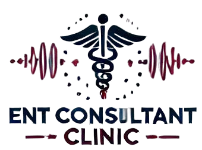Pinnaplasty is a cosmetic surgical procedure to correct prominent ears that stick out to the side. In this article, Mr Anurag Jain, a leading ear, nose and throat (ENT) surgeon, explains this procedure and its benefits.
What are the indications for pinnaplasty?
Prominent or bat ear deformity, also known as otapostasis, can pose a big problem in for children and adults. Although it doesn’t impact physical health, its consequences on mental health can be debilitating. Prominent ears can trigger teasing at school, causing great distress and deteriorating confidence, and potentially can lead to psychological problems or depression. It is caused by the shell of the ear, the concha, having a poorly developed antihelix and scapha due to cartilage malformation that occured in utero.
Doctors conduct a comprehensive review of the patient and their ear deformity in the clinic, not only to ascertain what the patients concerns and expectations are, but also to define what can be offered to them surgically.
What happens during a pinnaplasty?
The patient is put under a general anaesthetic and a suture is put behind each ear to pin them back towards the skull.
What are the risks and complications of pinnaplasty?
Apart from the risks of general anaesthesia and general risks of any operation – for example, bleeding, infection and scarring – the specific risks of pinnaplasty mostly consists of suboptimal or asymmetrical results, as pinnaplasty is undertaken for bilateral ear deformity.
Although most of my patients are satisfied and happy with the results of my surgery, I always explain to them that there is a small chance that sutures might give way in the future, negating the results and requiring a revisional surgery.
What are the success rates of pinnaplasty?
It depends on several factors, such as the patient’s age, and the thickness and rigidity of patient’s pinna cartilage. In carefully-selected patients, results are good.
What is the recovery time for pinnaplasty?
Recovery time is around two weeks, for which a medical certificate will be provided. After the surgery the patient will have a head bandage which is removed in the clinic a week after the surgery.
After, patients are advised to buy a wide, fabric headband (from a drug store or a sports supplier) and wear it low and covering both ears during sleep at night for a month. This is to prevent accidental pulling and tearing of the sutures in their sleep.
What are the alternatives to pinnaplasty?
Alternatives to pinnaplasty includes conservative management such as donning ear splints, or implants. Patients may choose to do nothing in milder cases.







